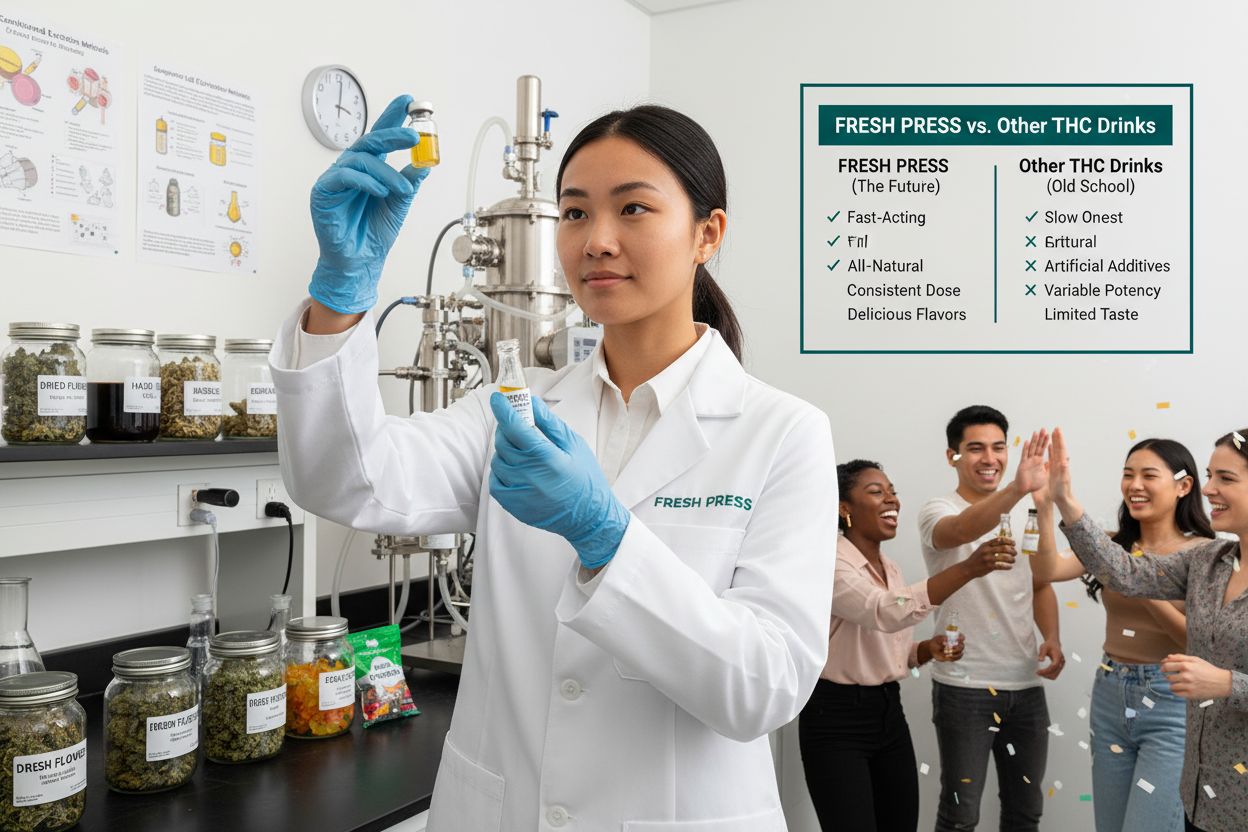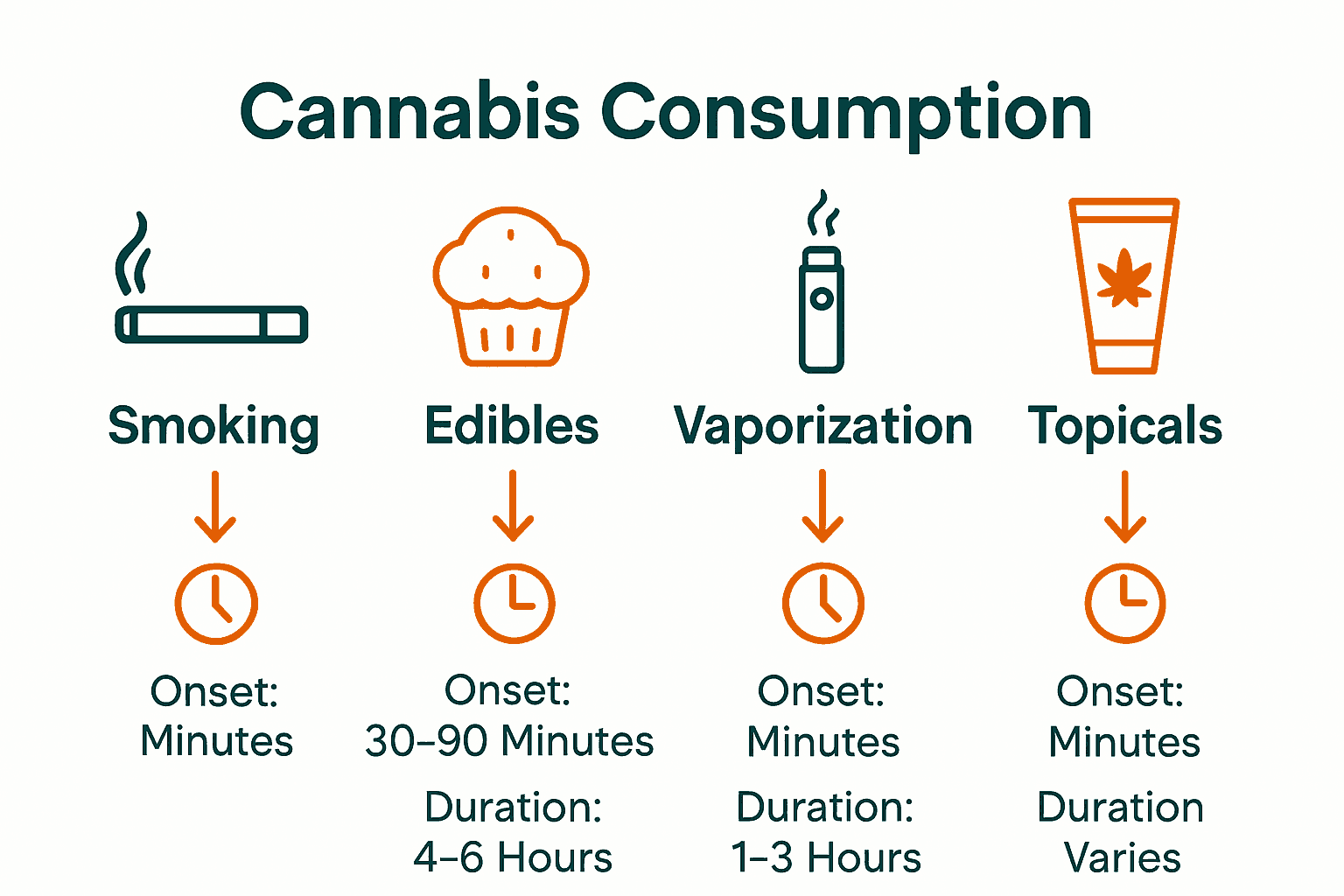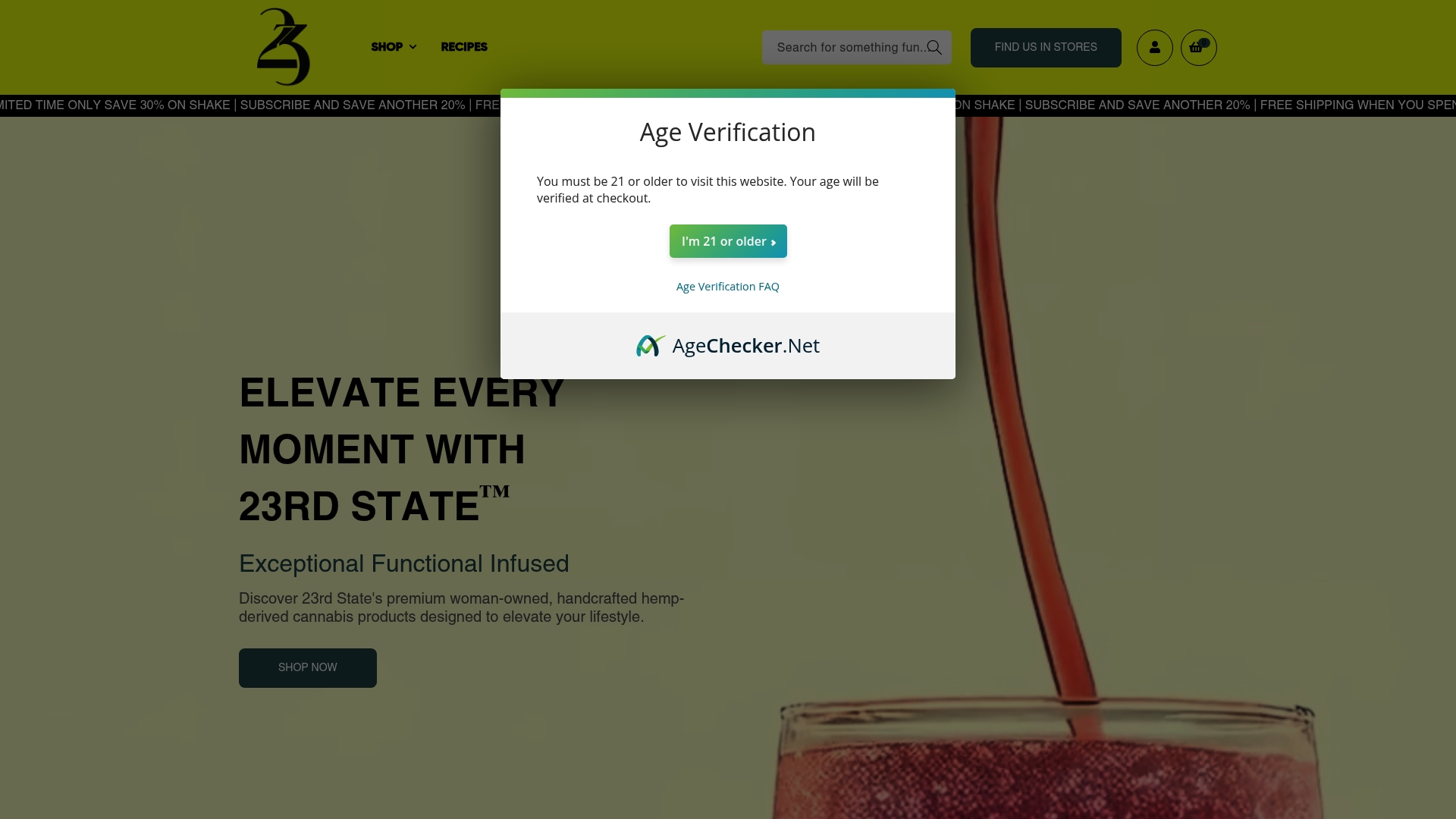Over 48 million Americans reported using cannabis recreationally in the past year. As legalization spreads and curiosity rises, more adults are exploring the world of cannabis for pleasure and relaxation. With new products, potent extracts, and a mix of state and federal laws, understanding recreational cannabis is more important than ever. Getting the facts helps you choose the right product, use it safely, and stay within the law.
Table of Contents
- Defining Recreational Cannabis Use
- Popular Cannabis Product Types Explained
- Methods of Recreational Cannabis Consumption
- Legal Status of Recreational Cannabis in the U.S.
- Health Effects, Safety, and Responsible Use
Key Takeaways
| Point | Details |
|---|---|
| Recreational Use Defined | Recreational cannabis use is characterized by its consumption for pleasure rather than medical purposes, despite federal restrictions. |
| Diverse Consumption Methods | Users can choose from various methods, including smoking, edibles, vaporization, and topicals, each offering distinct experiences and effects. |
| Complex Legal Landscape | While many states have legalized recreational cannabis, federal classification as a Schedule I substance complicates legal status and regulations across the U.S. |
| Health Implications | Cannabis consumption may affect cognitive and physical health, necessitating responsible use and awareness of individual health factors. |
Defining Recreational Cannabis Use
Recreational cannabis represents the intentional, non-medical consumption of cannabis products by adults seeking pleasure, relaxation, or social enjoyment. According to federal research, recreational cannabis is distinctly characterized by its use outside of medical treatment contexts, focusing on personal leisure and experiential purposes.
Under current federal regulations, marijuana remains classified as a Schedule I controlled substance, which technically prohibits non-medical consumption. However, individual states have progressively established legal frameworks allowing adult recreational use, creating a complex legal landscape where state and federal perspectives diverge. This nuanced environment means recreational cannabis users must carefully navigate local regulations and understand their specific jurisdictional guidelines.
The recreational cannabis experience encompasses various consumption methods, including:
- Smoking traditional cannabis flower
- Consuming edible products
- Utilizing vaporization technologies
- Exploring infused beverages and concentrates
For those curious about integrating cannabis into their lifestyle, understanding lifestyle cannabis products can provide deeper insights into responsible and enjoyable consumption practices. Ultimately, recreational cannabis use represents a personal choice that requires informed decision-making, respect for legal boundaries, and a commitment to personal wellness.
Popular Cannabis Product Types Explained
Cannabis consumption has evolved dramatically, offering consumers a diverse range of product types that cater to different preferences and experiences. According to research from Wikipedia, cannabis concentrates represent a sophisticated segment of the market, featuring high-potency extracts with THC concentrations ranging from 20% to over 90%, produced through advanced extraction techniques like solvent and supercritical CO₂ methods.
The landscape of cannabis products is remarkably diverse, encompassing multiple consumption formats designed to suit individual lifestyle needs and wellness goals. From traditional dried flower to innovative infused beverages, users can select products that align with their comfort level and desired experience. These product types typically include:
- Dried marijuana flower
- High-potency concentrates
- Hash and hash oil
- Advanced solvent-based extracts
- Infused edibles
- Vaporizable concentrates
Exploring the 7 types of cannabis products can provide deeper insights into the nuanced world of cannabis consumption. Each product type offers unique characteristics, potency levels, and consumption methods, allowing consumers to customize their recreational or wellness experience with precision and intentionality. Understanding these variations empowers users to make informed choices that best suit their personal preferences and desired outcomes.

Methods of Recreational Cannabis Consumption
Recreational cannabis consumption has evolved to offer diverse methods that cater to individual preferences and experiences. According to research published in PubMed, combustion remains the most prevalent method of recreational cannabis use in the United States, with smoking being the primary technique for consuming cannabis products.
The landscape of cannabis consumption encompasses several primary methods, each offering unique characteristics and user experiences:
- Combustion (Smoking): Traditional method involving direct inhalation of cannabis flower
- Ingestion (Edibles): Consuming cannabis-infused food and beverage products
- Vaporization: Heating cannabis to release active compounds without combustion
- Topical Application: Non-intoxicating method for localized relief
Exploring cannabis drink experiences can provide deeper insights into alternative consumption methods beyond traditional smoking. Each method offers distinct onset times, duration of effects, and intensity levels, allowing consumers to select an approach that best matches their comfort level and desired recreational experience.
Understanding these varied consumption techniques empowers users to make informed choices that align with their personal wellness and enjoyment goals.
Here’s a comparison of popular recreational cannabis consumption methods:

| Method | Typical Onset Time | Duration of Effects | Key Characteristics |
|---|---|---|---|
| Smoking | 1-10 minutes | 1-3 hours | Fast onset Traditional experience |
| Edibles | 30-90 minutes | 4-8 hours | Delayed peak Long-lasting |
| Vaporization | 1-10 minutes | 1-3 hours | Less odor Lower combustion toxins |
| Topicals | Varies | 2-4 hours | Non-intoxicating Localized relief |
Legal Status of Recreational Cannabis in the U.S.
The legal landscape of recreational cannabis in the United States remains complex and dynamically evolving. According to research from Wikipedia and congressional sources, recreational cannabis currently exists in a nuanced regulatory environment where state and federal perspectives dramatically diverge. While 24 states plus Washington D.C., Guam, and the Northern Mariana Islands have legalized recreational cannabis for adults 21 and older, federal law continues to classify marijuana as a Schedule I controlled substance.
The current legal framework presents a multifaceted picture of cannabis regulation across the United States:
- 24 states have fully legalized recreational cannabis
- Approximately 40 states permit medical cannabis use
- Federal classification remains at Schedule I, prohibiting nationwide recreational use
- Ongoing efforts propose rescheduling cannabis to Schedule III
Understanding cannabis beverage legal rules can provide crucial insights into the intricate legal landscape surrounding cannabis products. This patchwork of regulations means consumers must carefully navigate local and federal laws, understanding that legal status can vary significantly between jurisdictions. The ongoing legal transformation suggests a potential future where cannabis regulations become more unified and consistent across different states.
Health Effects, Safety, and Responsible Use
Cannabis consumption presents a complex landscape of potential health implications that require careful consideration and informed decision-making. According to research from the Centers for Disease Control, cannabis use can significantly impact multiple bodily systems, including memory, attention, coordination, brain function, and cardiovascular health.
The potential health risks and considerations associated with cannabis consumption include:
- Impact on memory and cognitive function
- Potential cardiovascular health risks
- Risk of developing cannabis use disorder
- Potential mental health complications
- Impaired driving and coordination
- Lung function concerns
Exploring THC consumption safety tips can provide crucial insights for responsible use. Approximately 21% of regular users may develop cannabis use disorder, underscoring the importance of mindful consumption. Experts recommend consulting healthcare professionals, understanding personal health history, and practicing moderation to minimize potential adverse effects. Responsible use involves recognizing individual tolerance, choosing appropriate consumption methods, and maintaining awareness of one’s physical and mental state during and after cannabis consumption.
Elevate Your Recreational Cannabis Experience with Trusted Hemp-Derived Products
Navigating the complex world of recreational cannabis means making choices that balance enjoyment, safety, and personal wellness. Whether you are exploring varied consumption methods like edibles or vaporization or seeking products with specific cannabinoid profiles, finding reliable options can be challenging. The article highlights key concepts such as responsible use and legal considerations that every consumer should understand to unlock the full benefits of cannabis recreation.
Explore premium hemp-derived items crafted for lifestyle enhancement at CBD. Our carefully curated selection supports safe and informed consumption while offering powerful experiences that align with your wellness goals.

Ready to take the next step toward an elevated and mindful cannabis journey Find what fits your lifestyle now at 23state.com and discover exclusive products, expert guidance, and ongoing promotions to empower your recreational cannabis choices. Don’t wait enhancement and enjoyment are one click away.
Frequently Asked Questions
What are the main methods of recreational cannabis consumption?
Recreational cannabis can be consumed through various methods including smoking, edibles, vaporization, and topical application. Each method offers a different onset time and duration of effects, catering to diverse user preferences.
What types of cannabis products are available for recreational use?
Recreational cannabis products include dried marijuana flower, high-potency concentrates, hash and hash oil, infused edibles, and vaporizable concentrates. Each product type features unique characteristics regarding potency and consumption method.
What are the potential health effects of using recreational cannabis?
Cannabis consumption may affect memory, attention, coordination, and cardiovascular health. It can also lead to risks such as cannabis use disorder, impaired driving, and potential mental health complications.
How does the legal status of recreational cannabis affect its use?
The legal landscape of recreational cannabis is complex, with various states allowing its use while federal law classifies it as a Schedule I controlled substance. Users must navigate local regulations to ensure compliance with the law.

